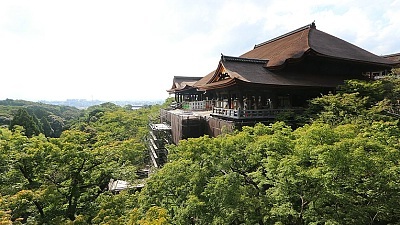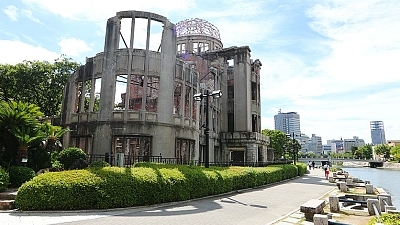Travel restarting: Nara

During my recent trip to check in on the general state of tourist attractions in the Kansai region, I was very excited to spend a day in Nara - a beautiful city packed with historic sites and one where I have many fond memories.
I arrived on a slightly overcast day back in September to find the station and its surrounding area noticeably quiet. Just around the corner in a usually busy covered shopping arcade, I was concerned but not surprised to see "closing down sale" signs at a souvenir and antiques store that had been there for as long as I can remember.
From the covered shopping street I turned left onto Sanjo Dori, an area often packed with visitors shopping for souvenirs or watching energetic displays of mochi pounding at the Nakatanidou store, but today I found it almost empty.
Naramachi
Located just to the east of JR Nara Station, Naramachi is an attractive neighborhood reminiscent of parts of Kyoto, with narrow, winding streets dotted with little temples and a great many historic buildings, some of which have become cafes, craft shops and museums.


Once a thriving merchant district, the area is especially known for its beautifully preserved machiya - elegant, narrow townhouses that often served as a shopfront, warehouse and family residence.




Always a little quieter than the main shopping streets and attractions, Naramachi is usually a great place for a quiet stroll away from the crowds but today the area was almost empty except for locals and a couple of isolated tour groups, and many of the smaller shops and cafes were shuttered.




Kofukuji
I next made my way into Nara Park, a large expanse of grass and woodland containing many of the city's historical attractions. My first stop was at Kofukuji Temple, built in the 8th century by the Fujiwara - a family of nobles that dominated the Imperial Court for much of the Nara and Heian periods. Today, the temple complex comprises a number of fascinating historical buildings including Japan's second tallest wooden pagoda, as well as the newly reconstructed Middle Golden Hall.


The temple was quiet as I arrived, but not empty. To one side, I saw a group of worshippers at the Southern Octagonal Hall, an unusual building that often draws visitors due to its inclusion on the West Japan 33 Temple Pilgrimage Route.

I also met a handful of other sightseers as I made my way into the East Golden Hall, a simple but fascinating structure dating to the 15th century but made in the style of the much earlier Nara Period. Inside is an imposing statue of Yakushi Nyorai, the patron Buddha of medicine cast in bronze, as well as a number of smaller woodcarvings including some truly striking pieces from the Kamakura Period.

Todaiji
Making my way from Kofukuji, I was pleased to find the area along the main road and the approach to Todaiji's impressive Nandaimon Gate a lot more lively, with a few groups of visitors enjoying the scenery and feeding the famous local deer.



Historically one of the most important temples in all of Japan and easily Nara's most popular attraction, Todaiji was first built in 752 and was one of the great centers of Buddhist political power until its decline in the Kamakura Period. Today, the temple's grounds cover most of the northern side of Nara Park, with the enormous Daibutsuden Hall at its center.


There were no lines to speak of on the way into the Daibutsuden Hall, but once inside I was surprised by how normal the atmosphere seemed, with a steady stream of visitors flowing in to enjoy the immense 15m bronze Buddha and the peaceful surrounding space.


Nara Park
From Todaiji, I made a leisurely circuit through the northern part of Nara Park, encountering only a handful of passers-by and a lot of very bored-looking deer.

Finally circling back to the east, I took an uphill path past the Tamukeyama Hachimangu Shrine, where I paused to watch a lone Shinto priest praying at the main building before continuing on my way, skirting the wooded slope of Mount Wakakusayama and passing more empty souvenir stores in the direction of my final stop of the day.

Kasuga Taisha
Located at the end of a long, wooded path lined with thousands of weathered stone lanterns, Kasuga Taisha is Nara's most celebrated shrine and closely bound up with city's long history. Built in an elaborate, Chinese-influenced style, the shrine's bright vermilion columns and contrasting white walls seem to perfectly offset the colors of the surrounding forest.

Making my way inside the shrine's inner precinct and along a set walking route past hundreds of hanging bronze lanterns, I saw another group of schoolkids and perhaps a dozen other visitors, making it one of the busier spots of the day by far.








